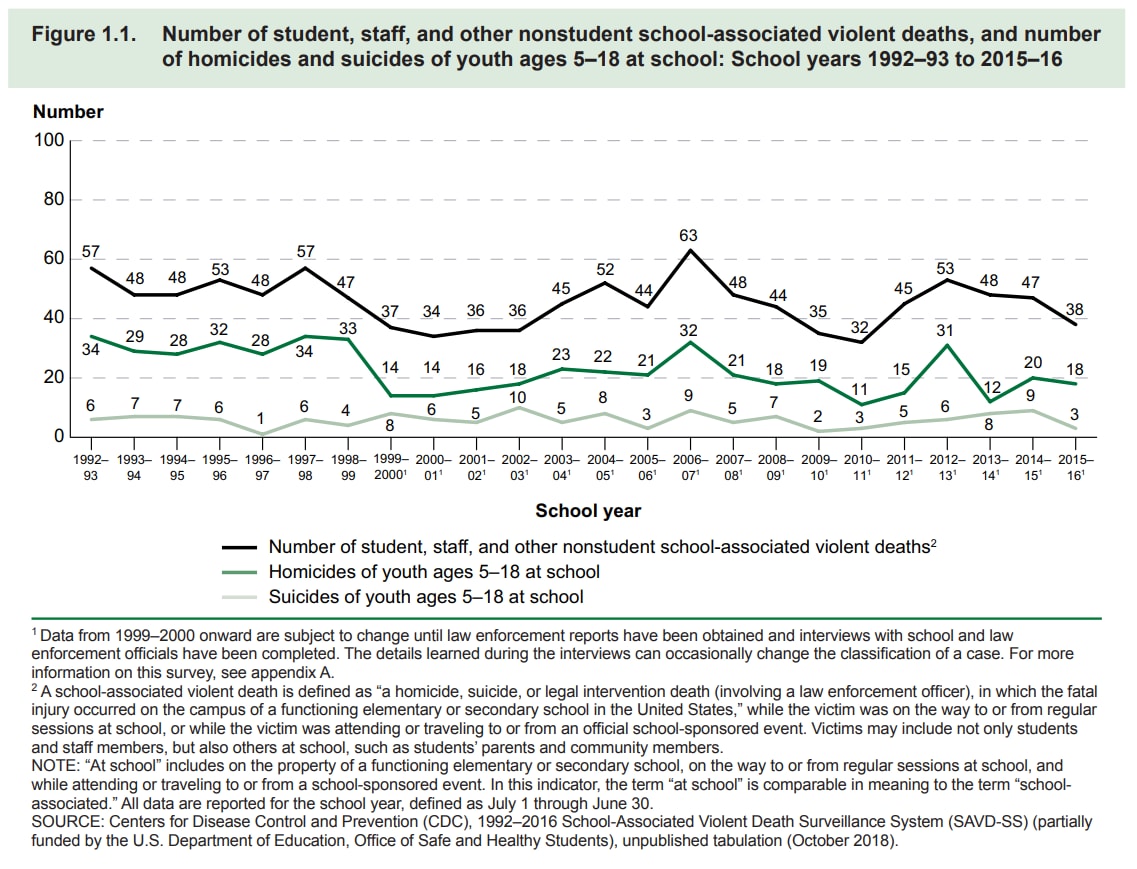School-Associated Violent Death Study
Homicide is the second leading cause of death among youth aged 5-18. Less than 2% of these homicides occur on school grounds, on the way to/from school, or at or on the way to/from a school-sponsored event. The School-Associated Violent Death Surveillance System (SAVD-SS) monitors school-associated violent deaths across the U.S. Information is collected each year from media databases and law enforcement officials. SAVD-SS presents the most recent data available on:
- school-associated violent deaths
- common features of these events
- risk factors for perpetration and victimization
These data play an important role in assessing national trends in school-associated violent deaths and helping inform efforts to prevent fatal school violence.
Major Findings
A case is defined as a violent death (i.e, homicide, suicide, or legal intervention) that occurs on school property, on the victim’s way to/from school, or at or on the victim’s way to/from a school-sponsored event. Violent deaths associated with functioning U.S. primary and secondary schools, both public and private, are included in the surveillance system.
- About 90% of school-associated youth homicide incidents from 1994-2016 involved only one victim.
- Multiple-victim incidents accounted for only 10% of all school-associated youth homicide incidents from 1994-2016, but involved a disproportionate number of all youth homicide victims (18.6%) during this time.
- Single-victim school-associated homicides are similar to youth homicides unrelated to schools, often involving male, racial/ethnic minority victims, and occurring in urban settings.
- While single-victim school-associated youth homicide rates remained stable from 1994–2016, multiple-victim school-associated youth homicide incidence rates increased significantly from July 2009 to June 2018.
- From 1994-2018, 95% of multiple-victim school-associated youth homicides were caused by firearm-related injuries.
- Firearms used in school-associated homicides and suicides came primarily from the perpetrator’s home or from friends or relatives.
- Nearly 50% of homicide perpetrators gave some type of warning signal, such as making a threat or leaving a note, before the event.
These findings underscore the importance of preventing violence at school as well as in communities.
Trends in School-Associated Violent Deaths—1992-2016
